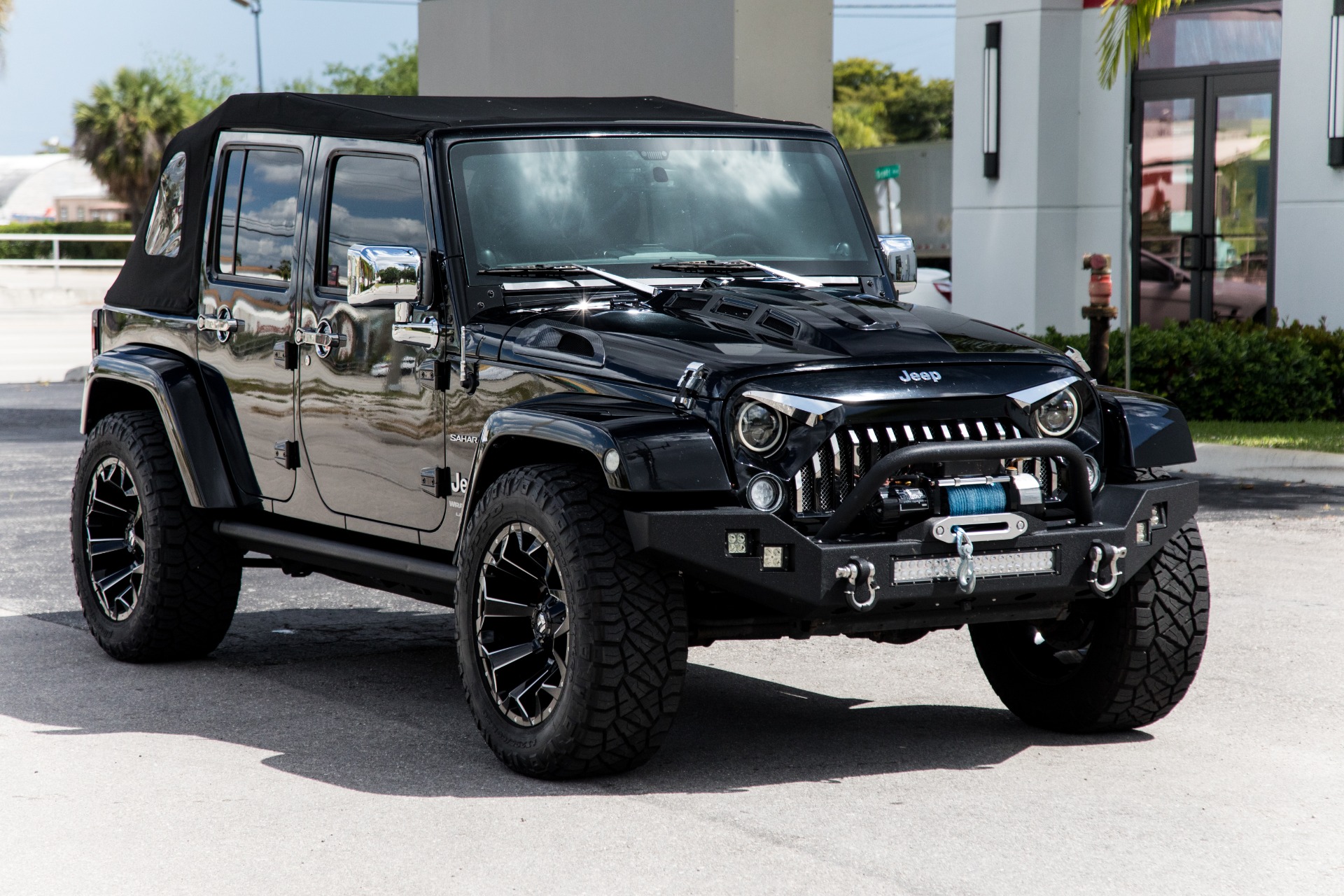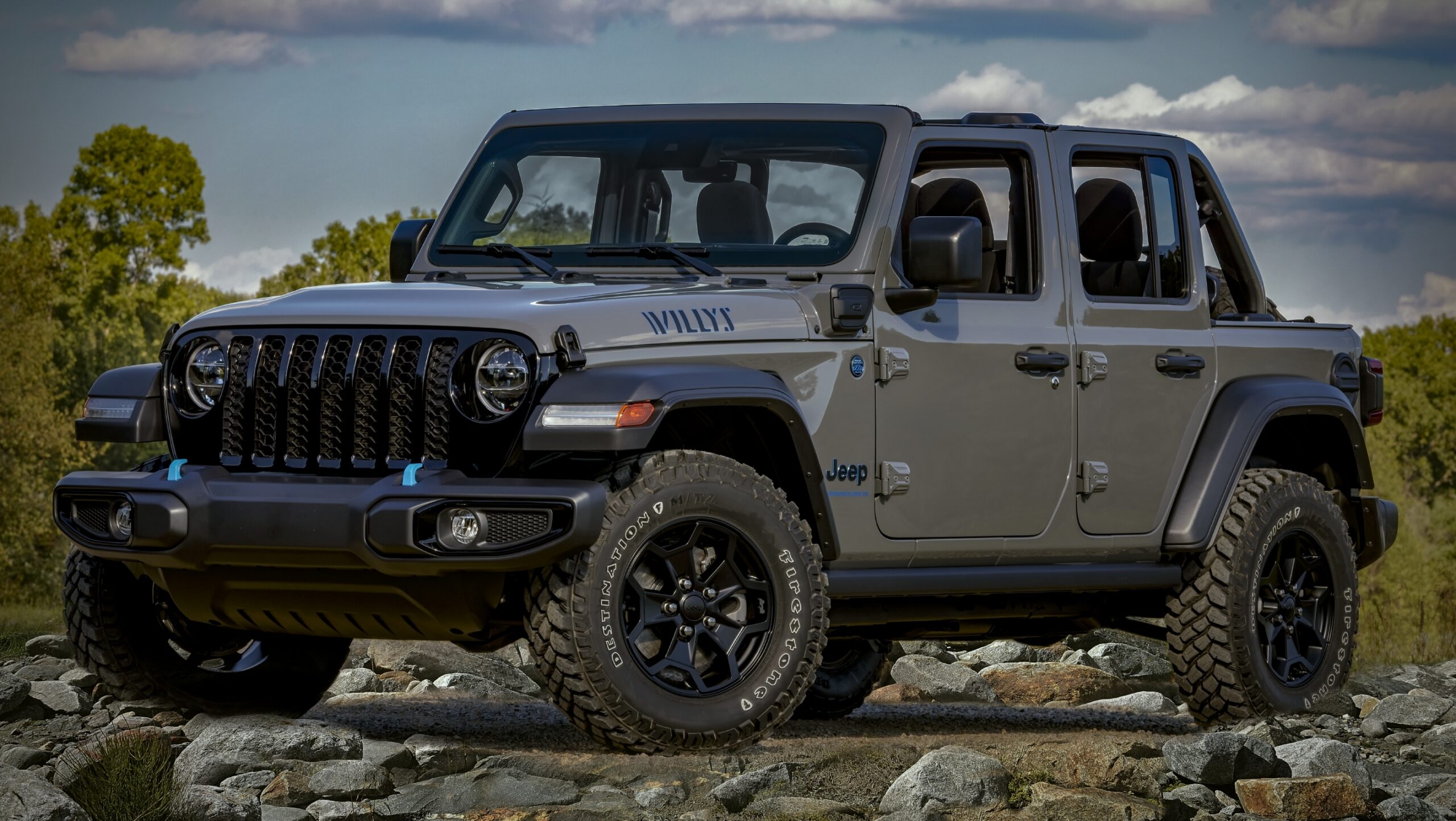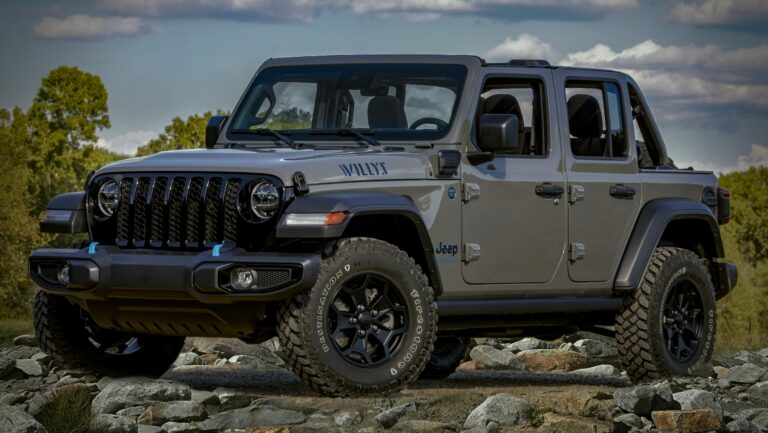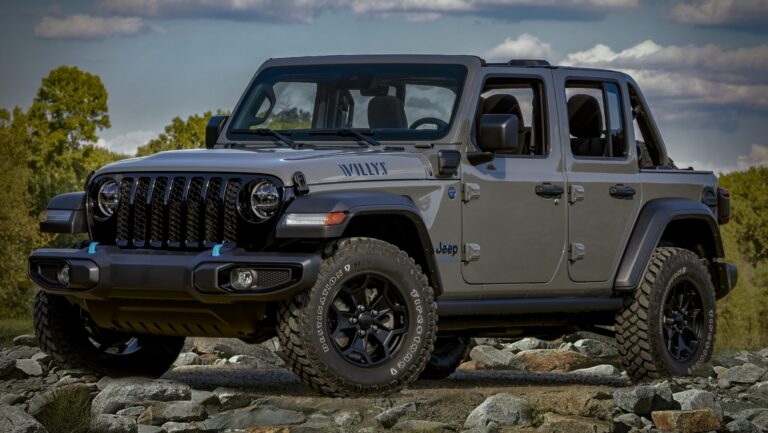Wrangler Jeep 1980
Wrangler Jeep 1980 jeeps.truckstrend.com
While the iconic "Wrangler" nameplate wouldn’t officially grace a Jeep until 1986 with the introduction of the YJ series, the spirit, lineage, and foundational design principles that define the modern Wrangler were very much alive and thriving in 1980. The vehicle that embodied this quintessential Jeep experience in that year was the Jeep CJ, specifically the CJ-5 and CJ-7 models. When enthusiasts refer to the "Wrangler Jeep 1980," they are, in essence, referring to the rugged, open-air, go-anywhere capability of the 1980 Jeep CJ – the direct ancestor that paved the way for the Wrangler we know today.
This article will delve into the world of the 1980 Jeep CJ, exploring its characteristics, its place in automotive history, what it was like to own and drive, and what prospective owners should consider when looking at these vintage off-road legends. Understanding the 1980 CJ is crucial to appreciating the roots of the Wrangler and the enduring legacy of the Jeep brand.
Wrangler Jeep 1980
The 1980 Jeep CJ: The True Ancestor of the Wrangler
To truly understand the "Wrangler Jeep 1980," one must look at the Jeep CJ (Civilian Jeep) series. Born from the legendary Willys MB military vehicle of World War II, the CJ line represented the civilian adaptation of that rugged design, evolving through several iterations over decades. By 1980, the CJ-5 and CJ-7 were the flag bearers, representing the culmination of years of refinement while retaining the core values of simplicity, utility, and unparalleled off-road prowess.
The CJ-5, with its shorter wheelbase and classic design, was a direct descendant of the earliest CJs. The CJ-7, introduced in 1976, offered a slightly longer wheelbase for improved stability and more interior space, making it a more versatile option for many buyers. Both models in 1980 shared the core DNA that would later define the Wrangler: solid axles, leaf spring suspension, an open-top design (with optional soft or hardtops), removable doors, and a fold-down windshield. These features weren’t just stylistic choices; they were fundamental to the Jeep’s identity and capability.
Design & Engineering of the 1980 Jeep CJ Models
The 1980 Jeep CJ models were characterized by their utilitarian design and robust, straightforward engineering. They were built for purpose, not luxury, and their mechanical simplicity contributed to their legendary durability and ease of repair in the field.
Key Features and Specifications:
- Chassis and Body: Both the CJ-5 and CJ-7 featured a body-on-frame construction, providing a robust platform for off-road abuse. The steel bodies were prone to rust, especially in humid climates or areas where road salt was used.
- Engines: In 1980, AMC (American Motors Corporation), which owned Jeep at the time, offered several engine options for the CJ:
- 2.5L (151 cu in) Iron Duke I4: A basic, fuel-efficient (by 1980s standards) four-cylinder engine, primarily found in the CJ-5. It offered modest power but was known for its reliability.
- 4.2L (258 cu in) AMC I6: This was the most popular and arguably the most suitable engine for the CJ. Known for its torque and durability, it provided ample power for both on-road driving and off-road adventures.
- 5.0L (304 cu in) AMC V8: Available in the CJ-7 (and less commonly the CJ-5), this engine offered significant power, transforming the CJ into a true muscle Jeep. However, it came at the cost of fuel economy.

- Transmissions:
- Manual: Standard was typically a 4-speed manual (e.g., Borg-Warner T-4 or T-176), with some models possibly offering a 3-speed.
- Automatic: A 3-speed automatic transmission (e.g., Chrysler 904 or TH400, depending on the engine) was an option, particularly with the larger engines.

- Transfer Case: All 1980 CJs came with a two-speed transfer case, allowing for selectable 2WD high, 4WD high, and 4WD low range. The standard was the Dana 20, but the CJ-7 also saw the introduction of the part-time Dana 300 transfer case, known for its strength and reliability.
- Axles: Typically, a Dana 30 front axle and an AMC 20 or Dana 44 rear axle were used, providing robust performance for off-road use.
- Suspension: Leaf springs at all four corners, combined with solid axles, provided excellent articulation for tackling uneven terrain but contributed to a somewhat firm and bouncy ride on pavement.
- CJ-5 vs. CJ-7:
- CJ-5: Shorter 83.5-inch wheelbase, more agile off-road, and a classic, compact look. Less stable at higher speeds.
- CJ-7: Longer 93.5-inch wheelbase, offering improved stability, more interior room (especially for rear passengers), and a slightly smoother ride. It was also easier to accommodate the larger V8 engine.
![]()
The Unmistakable Driving Experience
Driving a 1980 Jeep CJ is a visceral experience that truly connects the driver to the road (or lack thereof). These vehicles were not known for their refinement, but rather for their rugged charm and capability.
- On-Road: The ride can be firm and bouncy due to the leaf spring suspension and short wheelbase (especially the CJ-5). Steering is often vague, and braking requires a firm foot. Noise levels are high, and creature comforts are minimal. However, there’s an undeniable sense of freedom and a commanding view of the road that modern vehicles struggle to replicate. Top speeds are modest, and highway cruising can be a test of patience, especially with the smaller engines.
- Off-Road: This is where the 1980 CJ truly shines. Its short wheelbase (CJ-5), excellent approach and departure angles, robust 4×4 system with low-range gearing, and solid axles make it an incredibly capable machine. It can navigate tight trails, climb steep inclines, and traverse rocky terrain with surprising ease. The open-top design enhances the off-road experience, allowing occupants to feel fully immersed in nature.
Owning a Piece of History: Maintenance and Longevity
Owning a 1980 Jeep CJ today is a commitment to a piece of automotive history. These vehicles are relatively simple mechanically, making them approachable for the home mechanic, but they do require regular attention.
Common Issues & Maintenance Tips:
- Rust: The biggest enemy of the 1980 CJ is rust. Inspect the frame, body mounts, floorboards, rocker panels, and fenders thoroughly. Many CJs have significant rust issues due to their age and lack of factory rust protection.
- Electrical Gremlins: Simple wiring harnesses can still develop issues over time due to corrosion or wear.
- Fluid Leaks: Expect some drips from the engine, transmission, or axles. Regular checks and topping off are crucial.
- Carburetor Issues: The factory carburetors (especially the Carter BBD on the I6) can be finicky. Many owners upgrade to aftermarket fuel injection systems for improved reliability and performance.
- Steering Play: Worn steering components (tie rod ends, drag link, steering box) are common and contribute to the vague steering feel.
- Parts Availability: Fortunately, the aftermarket support for CJ Jeeps is excellent. Most mechanical and many body parts are readily available, making restoration and repair feasible.
- Regular Maintenance: Adhere to a strict schedule for oil changes, fluid checks, greasing, and inspecting suspension components.
Customization Culture: Making a CJ Your Own
From their earliest days, Jeeps have been platforms for customization, and the 1980 CJ is no exception. The aftermarket for these vehicles is enormous, allowing owners to tailor their Jeep to their specific needs, whether it’s for serious rock crawling, overlanding, or simply cruising with a unique aesthetic.
- Lift Kits: Common for increasing ground clearance and allowing for larger tires.
- Tires and Wheels: Upgrading to larger, more aggressive tires is popular for enhanced off-road grip.
- Engine Upgrades: Swapping to more powerful engines (e.g., modern V8s) or installing fuel injection systems.
- Axle Upgrades: Replacing stock axles with stronger ones for extreme off-roading.
- Body Armor: Adding rock sliders, bumpers, and skid plates for protection.
- Interior Mods: Replacing seats, adding sound systems, or installing custom gauges.
- Tops and Doors: Options range from full hardtops for winter to bikini tops for summer, along with various half-door and tube-door configurations.
Challenges and Considerations for the Modern Enthusiast
While owning a 1980 Jeep CJ offers a unique connection to automotive history and an unparalleled off-road experience, there are practical challenges to consider in the modern era.
- Safety: These vehicles predate modern safety standards significantly. They lack airbags, ABS, and advanced crumple zones. Rollover risk is higher, especially with lift kits and large tires. Driving defensively is paramount.
- Comfort: Long trips can be tiring due to noise, vibration, and the firm ride.
- Fuel Economy: Expect single-digit to low-double-digit MPG figures, especially with the larger engines.
- Emissions: Depending on your location, passing emissions tests can be a challenge with older, carbureted engines.
- Daily Driver Suitability: While some owners use them as daily drivers, a 1980 CJ is often better suited as a weekend toy, a dedicated off-road rig, or a second vehicle.
Practical Advice and Actionable Insights
For those considering acquiring a 1980 Jeep CJ (the "Wrangler Jeep 1980" in spirit):
- Do Your Research: Understand the differences between the CJ-5 and CJ-7, and the various engine and transmission combinations.
- Inspect Thoroughly: Rust is the primary killer. Bring a magnet and thoroughly check the frame and body. Look for signs of major accidents or poor repairs.
- Test Drive: Pay attention to steering play, braking performance, engine health (smoke, strange noises), and transmission shifting.
- Budget for Repairs/Restoration: Unless you find a fully restored example, assume there will be ongoing maintenance and potential repair costs. Factor in upgrades like fuel injection for reliability.
- Join a Community: Connect with local Jeep clubs or online forums. The CJ community is passionate and incredibly helpful.
- Safety First: If planning to use it off-road, invest in a proper roll cage (if not already equipped), good tires, and recovery gear. Understand its limitations on public roads.
Pricing Guide for 1980 Jeep CJ Models
Please note that these are estimated values for a 1980 Jeep CJ (CJ-5 or CJ-7) in various conditions. Actual prices can vary significantly based on engine, transmission, options, modifications, geographical location, and market demand.
| Condition Category | Description | Estimated Price Range (USD) | Key Factors Influencing Price |
|---|---|---|---|
| Project/Poor | Significant rust, non-running or barely running, major mechanical issues, incomplete. Requires extensive restoration. | $3,000 – $8,000 | Extent of rust, completeness of parts, engine condition, title status. Often sold for parts or as a long-term restoration project. |
| Fair | Running and drivable, but with visible rust, dents, worn interior, and likely needs significant mechanical work (brakes, suspension, engine tune-up). May not pass inspection. | $8,000 – $15,000 | Engine/drivetrain health, frame integrity (minimal rust), cosmetic condition (paint, interior), number of previous owners. Good for someone looking for a rolling project they can drive. |
| Good | Solid body with minimal rust, good running condition, functional systems. May have minor cosmetic flaws or need some deferred maintenance. Ready to be enjoyed as-is. | $15,000 – $25,000 | Originality vs. tasteful modifications, engine type (I6 and V8 command more), manual vs. automatic transmission, condition of soft/hard top, tire condition, recent maintenance records. |
| Excellent | Well-maintained, largely original or professionally restored, minimal wear, strong mechanicals, clean interior, and exterior. Requires little to no immediate work. | $25,000 – $40,000+ | High degree of originality, professional restoration quality, rare options (e.g., V8, specific packages), low mileage (if documented), overall aesthetic appeal and attention to detail. Show-quality examples can exceed this range. |
| Restored/Custom | Fully restored to original specs or extensively customized with high-quality aftermarket parts. Often better than new condition. | $30,000 – $60,000+ | Quality of restoration (frame-off), specific custom components (engine swaps, advanced suspensions), show-winning pedigree, desirability of specific modifications (e.g., fuel injection, modern axles). Top-tier custom builds can command significantly higher prices. |
Note: These prices are for the 1980 Jeep CJ-5 and CJ-7 models, as the "Wrangler" brand did not exist in 1980. The CJ-7 generally commands a slightly higher price than the CJ-5 due to its longer wheelbase and slightly improved practicality.
Frequently Asked Questions (FAQ) about the "Wrangler Jeep 1980" (i.e., 1980 Jeep CJ)
Q1: Was there a Jeep Wrangler in 1980?
A1: No, the Jeep Wrangler nameplate was first introduced in 1986 with the YJ model. In 1980, the equivalent vehicles were the Jeep CJ-5 and CJ-7, which are the direct predecessors and spiritual ancestors of the Wrangler.
Q2: What’s the difference between a 1980 CJ-5 and CJ-7?
A2: The primary difference is the wheelbase. The CJ-5 has a shorter 83.5-inch wheelbase, making it more agile off-road but less stable on pavement. The CJ-7 has a longer 93.5-inch wheelbase, offering improved stability, more interior space, and a slightly smoother ride.
Q3: What engines were available in the 1980 Jeep CJ?
A3: In 1980, the main engine options were the 2.5L (151 cu in) Iron Duke I4, the 4.2L (258 cu in) AMC I6, and the 5.0L (304 cu in) AMC V8. The I6 was the most common and popular choice.
Q4: Are 1980 CJs good for daily driving?
A4: While some enthusiasts do daily drive them, 1980 CJs are generally not ideal for modern daily driving. They lack modern safety features, have poor fuel economy, can be noisy, and offer a firm, unrefined ride. They excel as weekend vehicles, off-road toys, or project cars.
Q5: Is it hard to find parts for a 1980 Jeep CJ?
A5: No, parts availability for 1980 Jeep CJs is excellent. Due to their popularity and the strong aftermarket support, most mechanical and many body parts are readily available from various suppliers.
Q6: What are the biggest issues to look for when buying a 1980 CJ?
A6: The absolute biggest issue is rust, particularly in the frame, body mounts, and floorboards. Other common concerns include worn steering components, carburetor issues, and general electrical gremlins. Always perform a thorough inspection for rust and mechanical soundness.
Q7: Can I put a modern engine in a 1980 CJ?
A7: Yes, engine swaps are a very popular modification for 1980 CJs. Many owners replace the original engines with more powerful or fuel-efficient modern engines (e.g., GM LS engines, Ford Coyote, or modern Jeep engines) to enhance performance and reliability. This often requires significant modifications to the drivetrain and wiring.
Q8: Are 1980 CJs safe?
A8: Compared to modern vehicles, 1980 CJs lack essential safety features like airbags, anti-lock brakes (ABS), and advanced crumple zones. Their high center of gravity and short wheelbase (especially the CJ-5) can also make them prone to rollovers if driven aggressively or improperly. Drive with extreme caution and consider adding aftermarket safety improvements like a stronger roll cage.
Conclusion
The "Wrangler Jeep 1980," though technically a misnomer, points directly to the venerable 1980 Jeep CJ-5 and CJ-7 models. These vehicles are not just old Jeeps; they are living testaments to an era of rugged simplicity, utilitarian design, and uncompromised off-road capability. They embody the very essence of the Jeep brand before the "Wrangler" name became official, representing the evolutionary link from military origins to the globally recognized icon of today.
Owning a 1980 CJ is an invitation to connect with automotive history, to experience driving in its most raw form, and to join a passionate community of enthusiasts. While they demand attention and respect for their age and unique characteristics, the rewards of piloting one of these vintage machines – whether on a challenging trail or a sunny Sunday cruise – are immeasurable. The 1980 Jeep CJ truly laid the groundwork for the Wrangler, cementing its legacy as the ultimate go-anywhere vehicle and continuing to inspire generations of adventurers.




